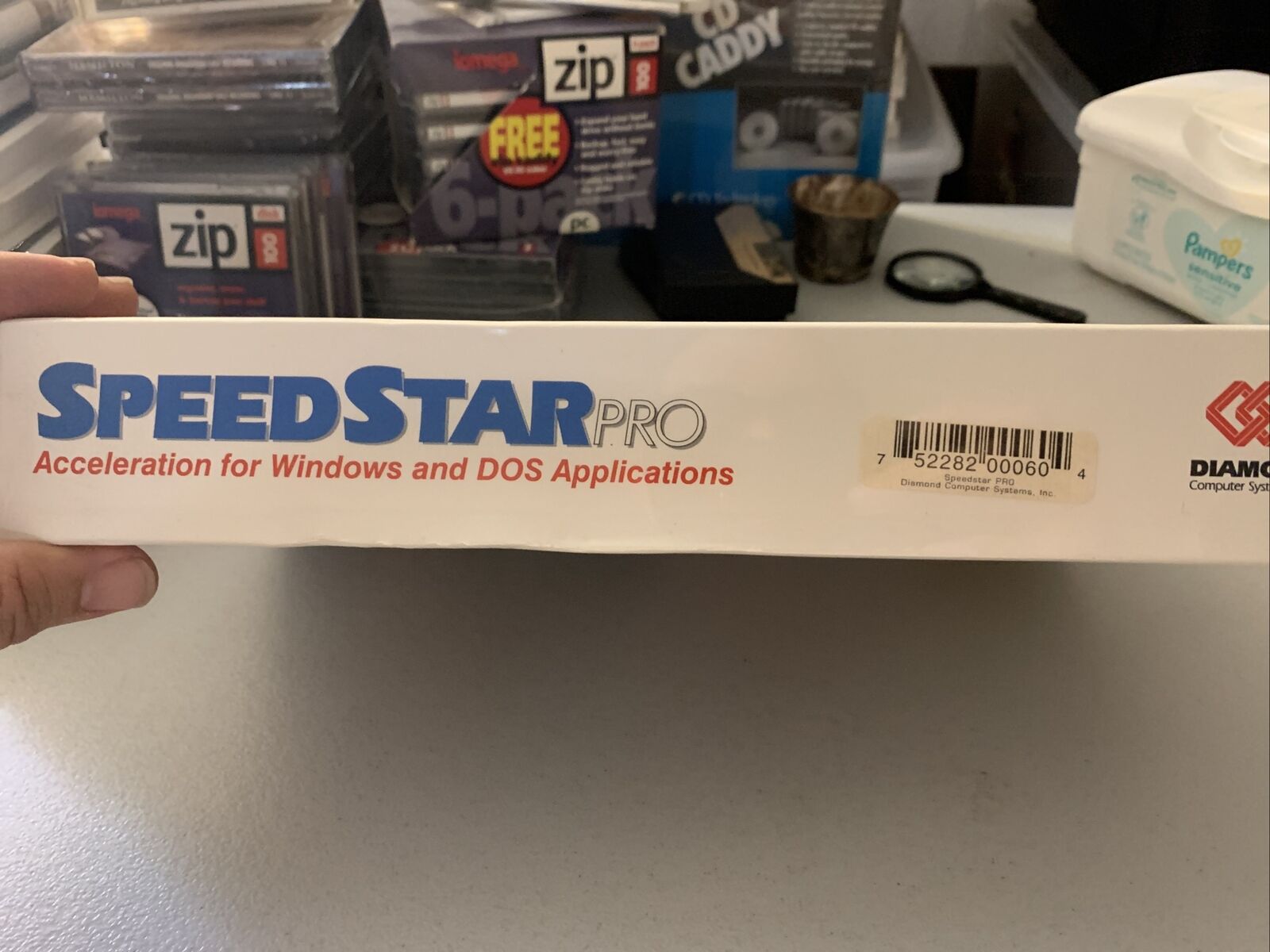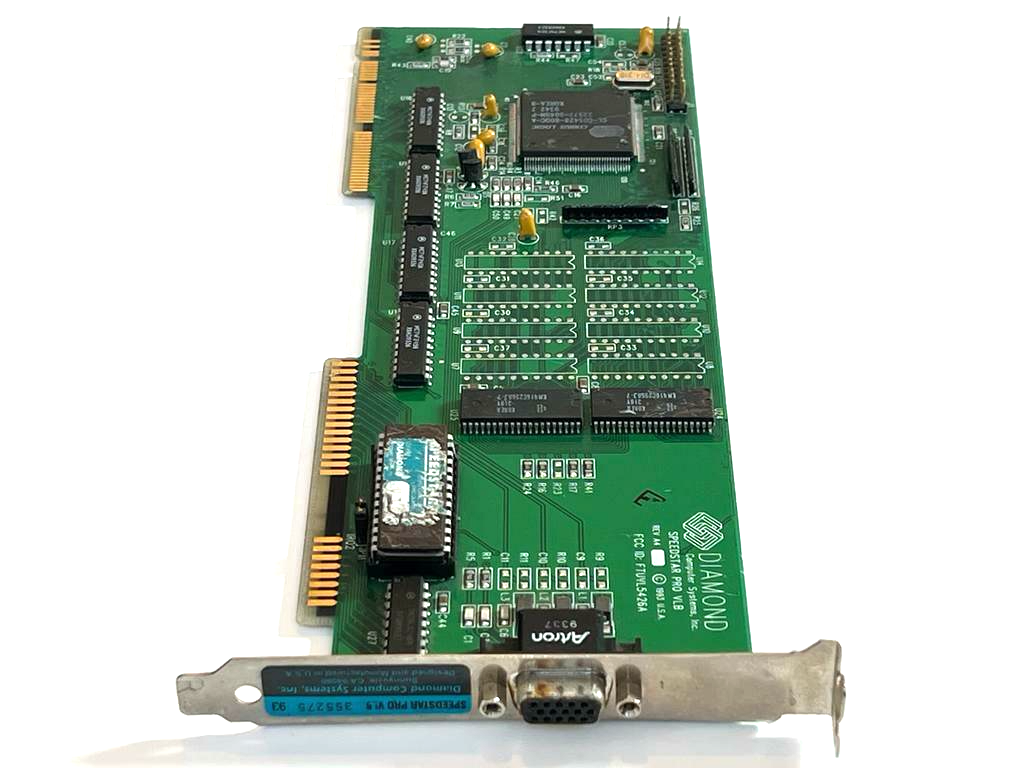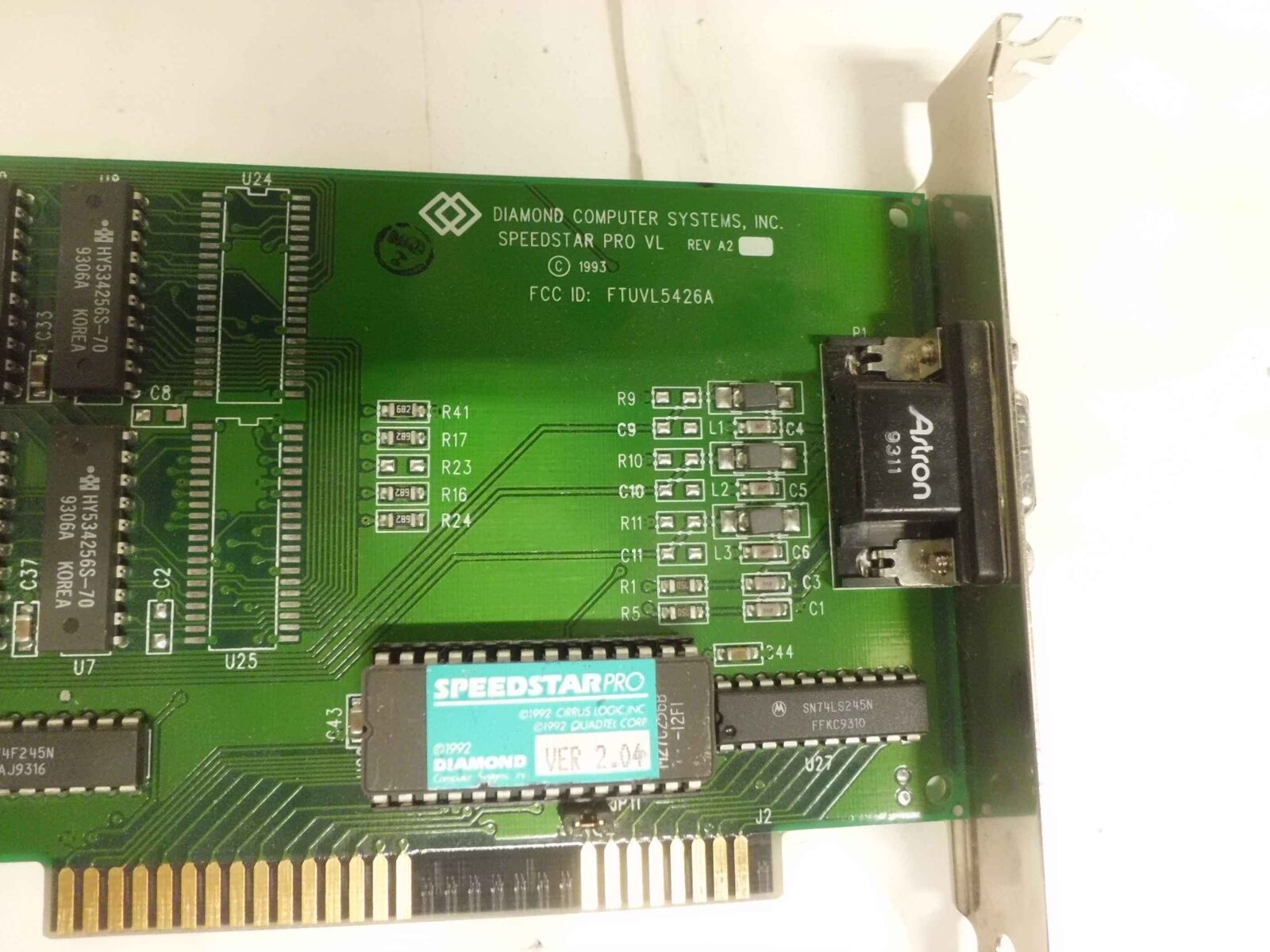Diamond SpeedStar Pro
The SpeedStar Pro was Diamond's first graphics accelerator, and the first time they built a card based on a Cirrus Logic chipset. The core clock speed ran at 80 MHz, with memory running at 50 MHz. It supported Windows resolutions up to 1,280 x 1,024 in 16 colours, and at lower resolutions 65,536 colours with 1 MB of installed video memory.
 |
Released | June 1993 |
| Bus | ISA 16-bit or VESA Local Bus | |
| Chipset | Cirrus Logic CL-GD5426 or CL-GD5429 or CL-GD5428 | |
| Standards | Hercules, CGA, EGA, VGA | |
| Memory | 1 MB FPM (expandable to 2 MB) | |
| Ports | 15-pin DSUB (video out) 26-pin VGA Feature connector |
|
| RAMDAC | ||
| Part # | ||
| FCC ID | FTUISA5426A (ISA version), FTUSA5426A (VLB version) | |
| Price | At launch: $136 (ISA) / $142 (VLB), Dec 1993: $116 (VLB), May 1994: $109 (ISA) / $115 (VLB), Dec 1995: $97 (VLB) | |
| See Also | SpeedSTAR 24, SpeedSTAR 24X, SpeedStar Pro SE |
The Fast Page Mode (FPM) memory used by the SpeedStar Pro series ran at 70ns. ISA-based cards came with 1 MB of the traditional 20-pin DIP DRAM chips with expansion to 2 MB requiring the new 40-pin SOP (Small Outline Package) DRAM chips. The ISA-based card also had a single jumper to select 0WS (zero wait state) operation.
The VESA Local Bus cards came with either two 512 KB 40-pin SOP DRAM chips, with expansion to 2 MB requiring you to install eight further 20-pin DIP DRAM ICs, or with the eight DIP sockets populated and expansion requiring the two 40-pin SOP chips. I assume the different memory configurations were simply due to the availability (or lack of) of certain ICs.
The ISA-based SpeedStar Pro was sold as the SpeedStar Pro VGAwhile the VESA Local Bus version was called SpeedStar Pro VLB.
The driver disk includes a convenient "GO.EXE" DOS utility to assist in installing drivers for Windows 3.1 and OS/2 2.0.
Later versions from early 1995 came with the later CL-GD5429 "Alpine" chip instead.
Board Revisions
Competition
In the Media
Setting it Up
Downloads
Operation Manual Get in touch if you can provide this missing item! |
Original Utility Disk Get in touch if you can provide this missing item! |
|
VGA BIOS ROM Get in touch if you can provide this missing item! |
VGA BIOS ROM Get in touch if you can provide this missing item! |
VGA BIOS ROM Get in touch if you can provide this missing item! |
More Pictures











